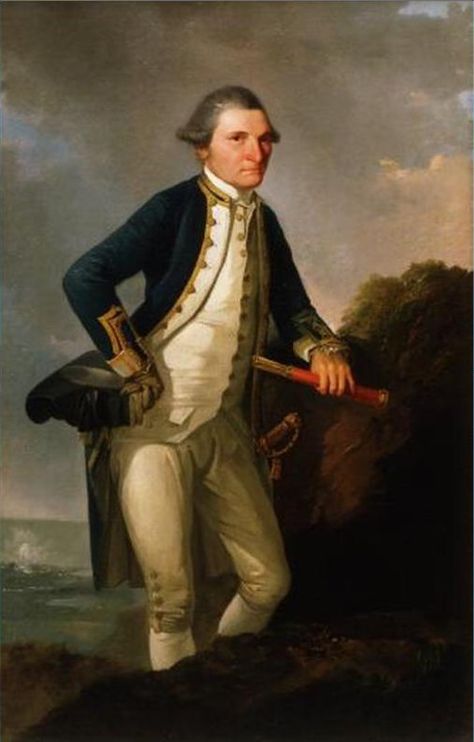Table of Contents
Australian Flag: History, Design, Meaning, and Significance
Featuring one of the most complex yet beautiful designs, the Australian flag depicts the eminence of European colonization, and the impact of British explorers while bestowing the symbolic representation of the Commonwealth country and the federal provinces.
Selected from a pool of entries in a competition organized in 1901, the initial design boasted a six-pointed Commonwealth Star at the lower canton part on the hoist side. However, the present-day flag with the seven-pointed star was adopted on 8 December 1908.
Design
The Australian flag has an exquisite design illustrating its in-depth significance as a national symbol. The flag has a width-to-length ratio of 1:2. Below is an analysis of the design specifics of the Australian flag:
- The Union Jack of the British Empire occupies the quarter to the top canton on the hoist side
- Below the Union Jack is the big seven-pointed star called the Commonwealth Star or the Federation Star located at the center of the lower quarter on the hoist side. The 6 points of the big star represent the 6 Australian states. The 7th point demonstrates all other Australian territories. The outer diameter of the Federation star must be 3/20 of the width of the flag.
- The other half of the flag on the fly side depicts the Southern Hemisphere:
- Alpha Crucis: The 7-pointed small star located straight below the center fly and 1/6 up from the bottom edge Beta Crucis: The 7-pointed small star located ¼ towards the left and 1/16 up from the center fly
- Gama Crucis: The 7-pointed small star located straight above the center fly and 1/6 towards the bottom from the top edge
- Delta Crucis: The 7-pointed small star located 2/9 towards the right and 31/240 up from the center fly
- Epsilon Crucis: The five-pointed and smallest of all the stars is located 1/10 to the right and 1/24 towards the bottom from the center fly. Its outer diameter is 1/24 that of the width of the flag.
The outer diameter of all other stars of the Southern Hemisphere is 1/14 to the width of the flag.
Facts About Australia
Capital: Canberra
Largest City: Sydney
National Language: English
Area: 7,692,024 km2
Population: 25,782,000
Currency: Australian dollar (AUD)
Anthem: Advance Australia Fair
Meaning and Significance
The Australian flag has a blue field comprising of three prime elements representing historical, political, and geographical aspects:
- The Union Jack (in the upper left canton) – It symbolizes the historic British colonial settlement in the continent, the basic principles of the Australian Federation, and the loyalty to the British Empire.
- The Commonwealth/Federation Star: Also found on the Australian coat of arms, the seven-pointed big star located just below the Union Jack signifies the union of the six states and all other territories forming the Commonwealth of Australia.
- The Southern Cross: This part of the flag features a constellation of five stars evident from the southern hemisphere. This represents the geographical features of the Australian mainland.
Color Scheme and Specifications
There is no specified color scheme mentioned in the Flag Act for the Australian flag. However, the Awards and Culture Branch of the Department of the Prime Minister and Cabinet have given the Pantone specifications. The CMYK and RGB specifications have been provided by the Style Manual for Authors, Editors, and Printers of the Australian Government.
The specifications in different color scheme are as mentioned in the table below:
|
Scheme |
Blue |
Red |
White |
|
RGB (Hex) |
0-0-139 (#00008B) |
255-0-0 (#FF0000) |
255-255-255 (#FFFFFF) |
|
Pantone |
280C |
185C |
Safe |
|
CMYK |
100%-80%-0%-0% |
0%-100%-100%-0% |
0%-0%-0%-0% |
History of the Australian Flag
Since ancient times, Australia has been the hub of colonial settlements. Before emerging as a united Federation, there were colonial establishments in various parts of the country. Most noteworthy of them are the Dutch colony established during the 17th century in Western Australia, and Tasmania, and the 6 individual British colonies during the colonial period (1788-1900).
The Dutch Triband (17th Century)
The first-ever use of flags in Australia dates back to the early 17th century when Captain Willem Janszoon sailed a vessel called Duyfken from Java to the region now named Cape York in 1606. Later several explorers of the Dutch East India Company including Dirk Hartog (who arrived in 1616) and Abel Tasman (who landed in 1642) played an eminent role in the establishment of Dutch colonies in various parts of the nation.
All of these explorers used the Dutch Triband flag featuring three horizontal stripes of equal dimensions in orange (top), white (middle), and blue (bottom). The white band had “VOC” inscribed at the center of the flag.
Red Ensign
Lieutenant James Cook was the first British explorer to arrive at Kurnell on Botany Bay, Australia on 29 April 1770. He was on a discovery voyage on HM Bark Endeavor (in service of the British Royal Navy).
The ship was using the British Red Ensign (one of the three flags commonly used by the navy at that time).
Union Flag (1801)
With the introduction of the Act of Union 1801, Ireland was merged with the Kingdom of England and Scotland (created in 1707) to form the United Kingdom of Great Britain and Ireland which came into effect on 1 January 1801. At this time, the Union Flag was modified to include the Cross of Saint Patrick as the representation of Ireland.
The new Union Jack also came into official use in Australia after 1808 until the formation of the new flag after the commencement of the Federation of Australia when 6 individual British colonies in Queensland, Victoria, New South Wales, Western Australia, South Australia, and Tasmania united to form the Commonwealth of Australia having a federal government.
The Commonwealth of Australia was formed on 1 January 1901 also putting the Constitution of the country into effect from the same day.
Flags in Use in the British Colonies of Australia (1770-1900)
The colonial era began in Australia in 1788 when the first fleet of British ships reached Sydney, New South Wales. From 1778 to 1850, the explorers leveraged efforts to establish British colonies in various parts of Australia, conducted scientific exploration of the entire continent and so much more.
Herein is a quick list of flags extremely important in the history of the colonial period in Australia.
Union Flag (1770-1800)
Cook hoisted the Union Jack (the original Union flag of 1606 without the Saint Patrick’s Saltire) on Australian soil on 29 April 1770 at Botany Bay.
After this, the British flag was again hoisted in Australia on 26 January 1788 that marking the British colonial settlement on the continent. This date is now observed as the National Day in Australia.
James Cook (1728-1779)
Flag Movement in Australia
The urge for a national flag was roused in several parts of the continent during the early 19th century. Eventually, several unauthorized flags gained popularity and were put into use for various purposes.
National Colonial Flag (1823-24)
The first of them is the National Colonial Flag designed by Captain John Bingle, a former mariner, and Captain John Nicholson. Based on a white field, the flag was divided into 4 equal parts by a red cross containing an eight-pointed star on each of the 4 limbs. It also had the Union Jack in the upper canton on the hoist side.
Federal Flag Design Competition (1901)
The thought of having a design for the official federal flag gained soaring popularity by 1900. Melbourne Herald conducted a flag design competition in the same year for prize money of 25 Australian Pounds. According to the mandatory conditions, all entries must include the Union Jack and the Southern Cross in the new design to depict the British Ensign style flag.
Later in 1901, the British Government asked the Federal Government to develop a new flag for the Commonwealth of Australia. The Federal Government then conducted an official competition to receive the new national flag design ideas.
Each participant was asked to submit two designs- one red ensign for public use and merchant services and the other blue ensign for use for official purposes and naval forces.
Federation Flag (1831)
Though not officially adopted, this is one of the most popular flags during the movement for Federation in the 1880s. It was also designed by Captain John Nicholson having a similar design to that seen on the National Colonial Flag with a few differences. The Federation Flag had a blue cross instead of red with an extra star placed at the intersection of the blue bands forming the cross.
Adoption of the Australian National Flag
The design of the National flag of Australia was chosen from the designs submitted during the official flag design competition. The original design selected had a six-pointed Commonwealth Star. The flag was flown for the first time on 3 September 1901 in Melbourne. The date is observed as the Australian National Flag Day.


